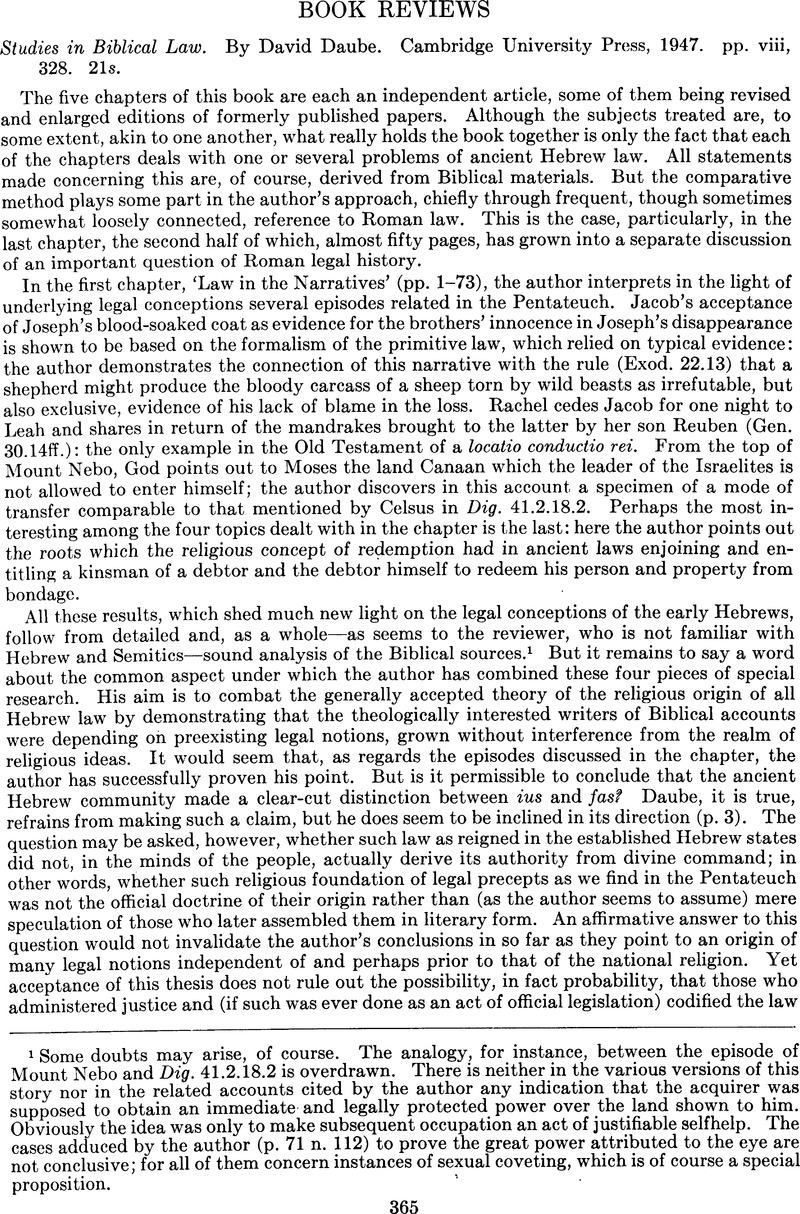No CrossRef data available.
Published online by Cambridge University Press: 29 July 2016

1 Some doubts may arise, of course. The analogy, for instance, between the episode of Mount Nebo and Dig. 41.2.18.2 is overdrawn. There is neither in the various versions of this story nor in the related accounts cited by the author any indication that the acquirer was supposed to obtain an immediate and legally protected power over the land shown to him. Obviously the idea was only to make subsequent occupation an act of justifiable self help. The cases adduced by the author (p. 71 n. 112) to prove the great power attributed to the eye are not conclusive; for all of them concern instances of sexual coveting, which is of course a special proposition.Google Scholar
2 Cf. ‘Codes and Codas in the Pentateuch,’ Jurid. Review 53 (1941) 242ff.Google Scholar
3 Law Quart. Rev. 52 (1936) 267f.; see also, most recently, Studî in onore di Siro Solazzi (Naples 1948), pp. 64ff. of the reprint. The reviewer is not convinced.Google Scholar
4 The chapter will also appear in the Sociological Review under the title ‘Two Notes on Communal Responsibility.’ Google Scholar
5 The theory would not fit the clause (Exod. 21.25): ‘burning for burning, wound for wound, stripe for stripe,’ but the author proves the interpolation of this clause.Google Scholar
6 It may be remarked that the punitive idea is clearly present in the opening paragraphs of the Hittite Code, in spite of the author’s attempt to utilize them for his theory. The murderer has to substitute four men for his victim! Any possibility of comparing the provision with the Hebrew ‘life for life’ would vanish, if Korošec, V., Festschrift Paul Koschaker (Weimar 1939) III 131 n. 11, is right in suggesting that the substitutes were probably slaves.Google Scholar
7 p. 167, with reference to Exod. 21.31 and to Müller, D. H., Die Gesetze Hammurabis und ihr Verhältnis zur mosaischen Gesetzgebung (1903) 166ff.Google Scholar
8 Cf. ‘How Esau Sold His Birthright,’ Cambridge Law Journal 10 (1942) 70ff.Google Scholar
9 Cf. ‘Some Comparative Law—Furtum Conceptum,’ Tijdschrift voor Rechtsgeschiedenis 15 1936) 48ff.Google Scholar